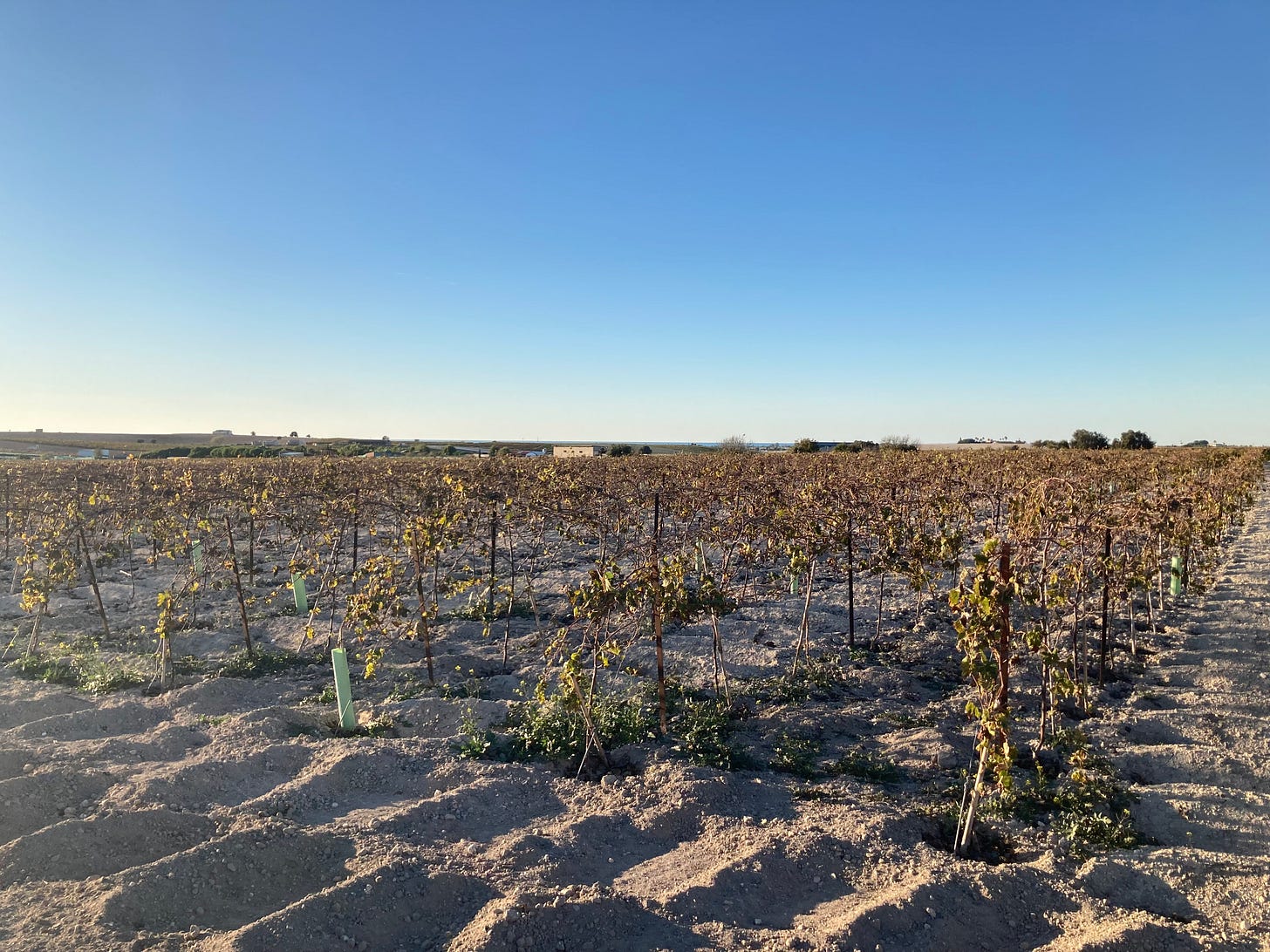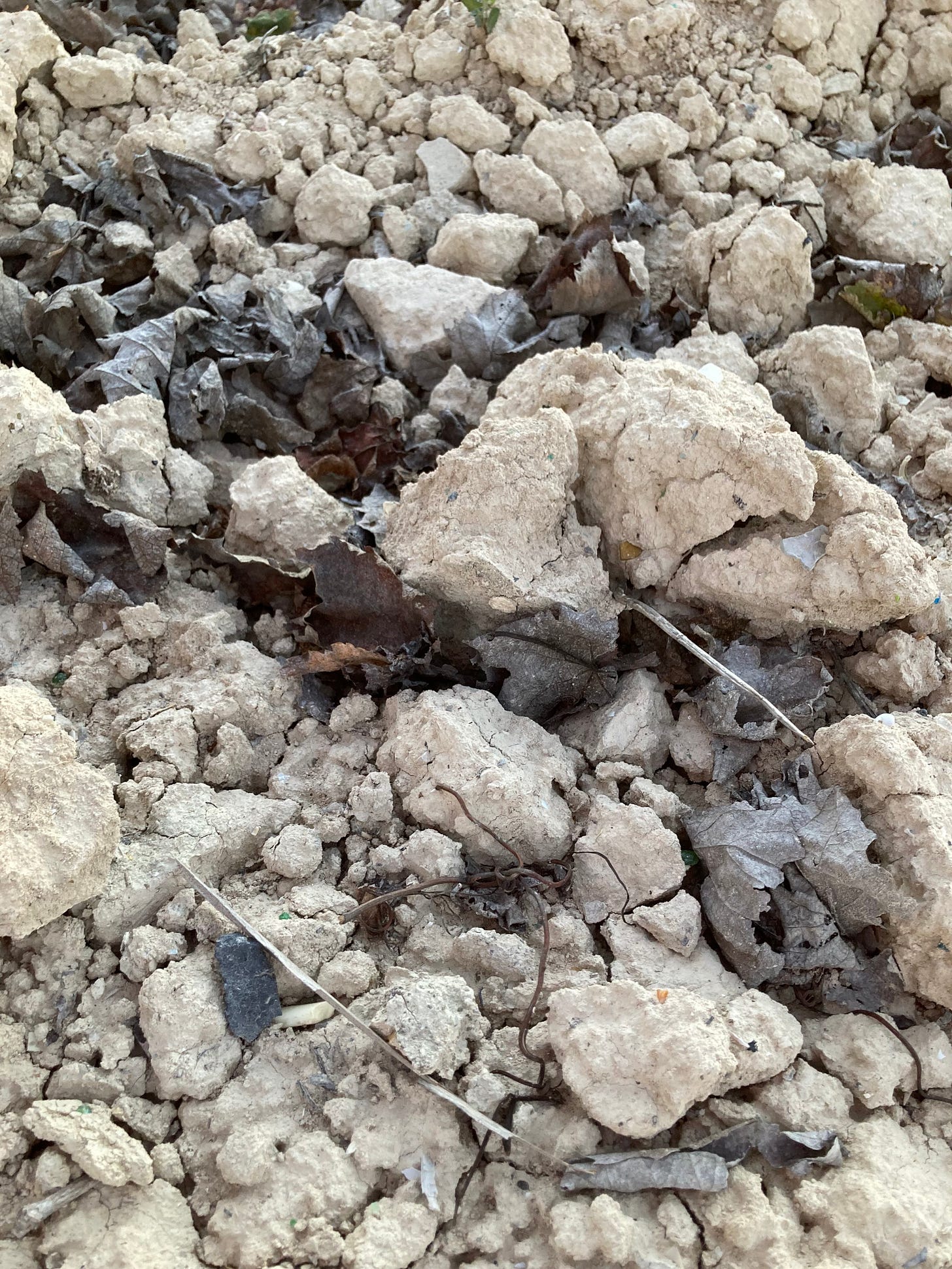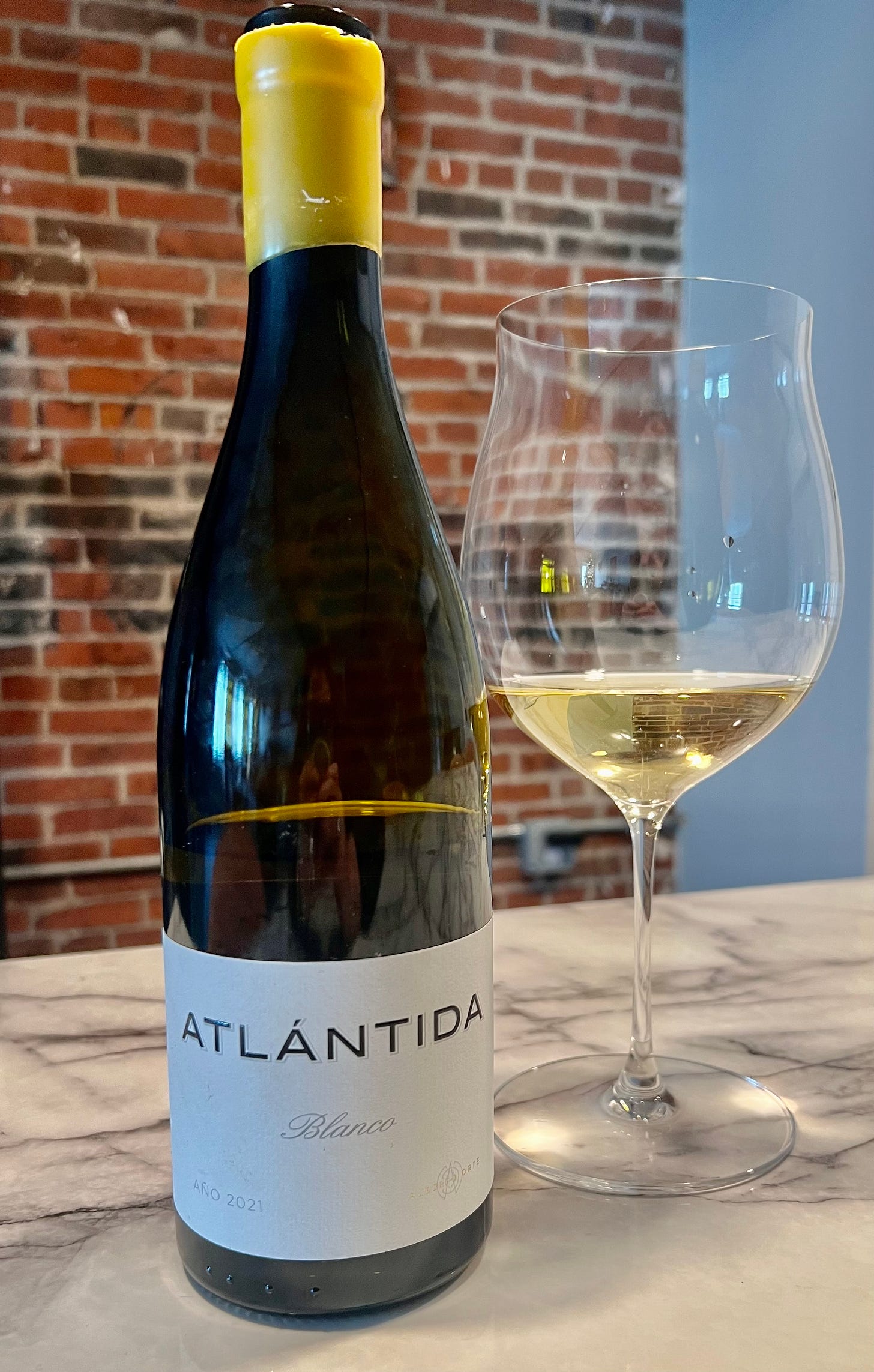A new, old style of wine in Southern Spain
Unfortified vinos de pasto are an amazing taste of ancient soil
Spring is a time of things coming back to life, the smell of the sun on fresh soil, and a change of seasonal produce! I love everything about springtime—the bright green peas fresh out of their pods, the grassy asparagus stalks served with nutty romesco, fava beans on the grill with some fresh thyme…this is all making me thirsty for a glass of white wine!
When you think of Spanish white wines, you might immediately think about Albariño. And of course, we’ve discussed before the very delicious verdejos from Rueda. But, friends, I’m here today to tell you that you NEED to try something both old and new…the unfortified still white wines from Jerez, in Spain’s deep south!
The Jerez region is most famously known for sherry, and there are lots of beautiful sherries that I think you should try. What most people don’t realize is that Jerez has a perfect climate for still, dry white wines that aren’t fortified like sherry (to remind you, a fortified wine, like Sherry, vermouth, or Madeira has spirits added to it before it is aged in barrels). These new wines are called vinos de pasto, which literally means “pasture wine” and refers to the long history of these wines as being perfect for meals, something to enjoy while you’re eating. They’ve also always been an alternative to the more labor-intensive sherries. They are getting super popular in the south of Spain, and I’m excited that we are seeing more and more of them in the US too!
Why, in the home of sherry, are winemakers starting to make younger, fresher white wines? One, and I might not need to tell you again, (even I admitted it’s not my favorite!) sherry is a bit hard to sell to many people around the world, as more than half of the world’s sherry drinkers are either Spanish or British—and most sherry in Spain is drunk in a rebujito, a super refreshing cocktail of sherry and lemon-lime soda. Another reason is it takes much longer to make sherry…it needs to be aged for at least three years, and some of them are aged for decades. So these new white wines, which are made in a style more similar to other white wines in the world and can be made and sold within a season or two, can be on shelves much more quickly, which means profit sooner for a producer.
While we are just now starting to hear people talking about these wines, the history of this region—and its soil—is very rich. Grape growing goes back thousands of years—even before the Romans and Phoenicians, both of whom recognized the winegrowing potential of the region’s fertile soils and sunny, breezy air. One of the very famous soils of the area is the chalky, white albariza, which works both as a super effective water storage system and also reflects the intense Andalusian sunlight.
The grapes grown in the region are almost entirely native to Andalucía, and some of the ones being made into unfortified vino de pasto are ancient varieties that almost went extinct! We find a lot of palomino fino and Pedro Ximénez, which are both widely used in sherry, but also some garrido fino and zalema, which have been grown for thousands of years!
A beautiful example of a rare variety coming back in style is the wine called Atlántida Blanco, made by my friend Alberto Orte, who is also a co-owner of the wine import company Olé & Obrigado. Alberto comes from Cádiz, a small port town just south west of Jerez, where the grape Vijiriega was almost wiped out due to the pest known as phylloxera! One sip of Atlántida Blanco will transport you to Andalucía…you can almost taste the sun reflecting off the chalky soil, with the fresh sea air coming off the Atlantic. It balances bright acidity and minerality, which makes it perfect for some of Andalucía’s traditional foods…mackerel or oysters on the grill, some marinated olives…and of course, any and all fried seafood, like the famous tortillitas de camarones of Sanlúcar de Barrameda (remember when my daughters Inés learned to make them?)
Besides Alberto, creative winemakers all over the region are changing the map and making some very serious, high-quality wines that, as our Spanish wine director Jordi Paronella says, can compete with some of the great white wines of Burgundy, such as Chablis or Meursault! Some of my favorites, which you can get here in the States, are Alvear, de la Riva, Barbadillo, Cota 45, and Muchada-Léclapart.
We’re also offering some of these types of wines in our restaurants! The Bazaar in New York has a beautiful Palomino Fino by the glass, as well as a long list of bottles from some of the amazing producers I mentioned above…maybe it’s one of the best lists of these amazing wines in the country. Jaleo is also offering many of those same bottles. So, just a gentle suggestion, maybe you can come in and try them for yourself! We’d love to see you.
Tell me—have you discovered any of the still white wines from the South of Spain? What do you think?







We tried a Spanish white wine at Mar Bar
in Chicago.
Thanks for that information on the unfortified wines of Andalucía!